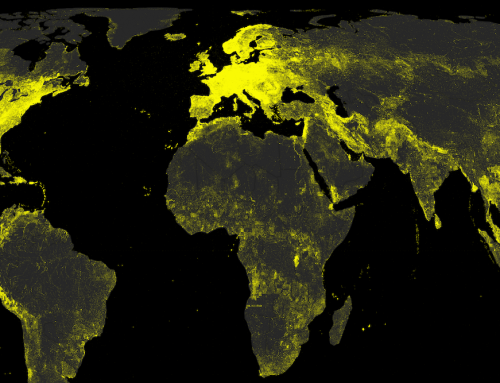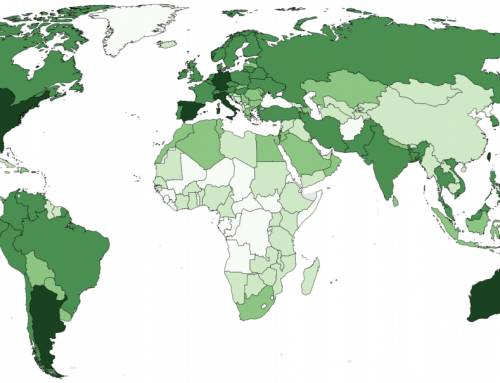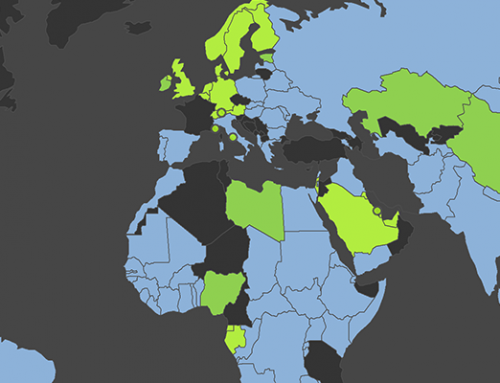(Click to see full image)
Github is one of the world’s biggest and best-known hosting services for software development projects. The shading of the map illustrates the number of users as a proportion of each country’s Internet population. The circular charts surrounding the two hemispheres depict the total number of GitHub users (left) and commits (right) per country. The uneven geographies on GitHub can possibly shed light on the ways in which different countries are being enrolled into a global knowledge economy.
Data
The data in this map consists of all public events logged by GitHub in 2013. The data are freely available from the GitHub Archive.
We analysed over 65 million commits, made by about 1.1 million users active in 2013 (i.e., users that registered at least one “PushEvent”). Only 26% of users (accounting for over 44% of the commits) specified a location that we were able to match to an actual place. We employed a script based on the Unlock Places service to geolocate the locations in people’s profiles.
Findings
GitHub has become one of the largest web-based hosting services for software development projects, and is used by 3.5 million users worldwide. Its global distribution is strongly correlated with the number of Internet users in a country.
North America and Europe each account for about one third of the total number of GitHub users. The platform is particularly popular in Northern Europe, where Iceland and Sweden each have more than 50 GitHub users for every 100,000 Internet users in the country, as well as in Eastern Europe. The United States, New Zealand and Australia are the countries where the service is most popular outside Europe (they have about 35 GitHub users for every 100,000 Internet users).
The remaining third of GitHub users are mostly located in Asia (17% of the total). Singapore (27 GitHub users per 100,000 Internet users), and Taiwan (10 GitHub users per 100,000 Internet users) are two of the biggest per capita users. A lot of usage comes from China, but on a per-capita basis the country isn’t a heavy user (fewer than 3 GitHub users for every 100,000 Internet users).
The Middle East and North Africa and Sub-Saharan Africa together represent less than 1% of GitHub users, and just about 1% of commits. Switzerland alone counts almost as many GitHub users as the Middle East and North Africa region, and more than Sub-Saharan Africa.
Not only are North America and Europe home to a majority of users, but those users make more contributions than their counterparts in the rest of the world. Each region is home to over 38% of commits to the platform. The United States, for instance, is home to 31% of users but over 35% of commits. Similarly, the Netherlands is home to 1.7% of the users but 2.4% of the commits, and Switzerland is home to 0.9% of the users but 1.4% of the commits.
We see the opposite dynamic in the rest of the world. India, for instance, accounts for 3.6% of users, but only 1.7% of commits.
In sum, the uneven geographies of collaborative software development likely tell us a lot about where our global knowledge economy is being performed. Africa and the Middle East, in particular, have far fewer people accessing open software tools than would be expected given their numbers of Internet users. Not only is a lot of the world not accessing software made available on GitHub, but they also aren’t contributing to it: a sign that this facet of our global knowledge economy remains heavily based in some of the world’s traditional hubs of codified knowledge.




